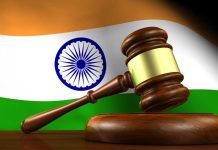- The global community is battling environmental degradation on several fronts, especially weather vagaries leading to unseasonal downpours, incessant/unpredictable cloudbursts, droughts, famines, snowfall, and frequent cyclonic disturbances, rendering humanity at the mercy of nature. Despite concerted efforts to address this glaring anomaly that has befallen us courtesy of irresponsible fossil fuel burning over the decades, resulting in greenhouse gas emissions that create havoc all around, the remedial measures implemented haven’t translated into tangible action on the ground. India is struggling on this front since pollution levels across the country, mainly in urban centres, are a huge concern. We are aware of the prevailing situation in Delhi.

PC: The Statesman
- Successive governments have initiated some plausible and some unfathomable measures to curb the growing menace of deteriorating air quality because of the unbridled rise in pollution, courtesy of various activities undertaken in line with the modern-day requirements. The question arises as to how serious India is about air quality if its capital’s pollution meters conk out on the year’s most polluted night? As reported in newspapers, Delhi’s air quality didn’t plummet to severe levels the day after Diwali, simply because when crackers started turning the capital into a gas chamber around 10 pm on 20th October, its air monitoring stations mysteriously malfunctioned. Why and how did the monitoring stations go quite just like that?

PC: Hindustan Times
- Note that cracker smoke and particulate matter gradually build up in the air, and clear out over many hours the next day. As such, post-Diwali air is at its most hazardous from about midnight to sunrise. Until 10 pm on Diwali, when air quality had already slipped into the severe category, all 39 stations were working. Then, as the Central Pollution Control Board’s data shows, the information stream dried up. By 1 am on 21st October, only 19 stations were functional: two hours later, 12. It was only around 8 am, when much of the cracker pollution had cleared, that almost all stations became functional again. Altogether 163 hours of Diwali AQI data from the peak pollution hours are missing this year, as against only 34 hours of data in 2024.

PC: Times Now
- Thus, nobody knows how bad Delhi’s air got on Diwali, and what impact green crackers had on it. Without strong, dependable data, in terms of both quantity and quality, how do you shape policy? Unfortunately, India has not been serious about air quality, even though pollution is estimated to reduce average life expectancy in the country by 5.2 years. It has 13 of the world’s 20 most polluted cities. A small place like Byrnihat, on the Assam-Meghalaya border, has become the most polluted in the world thanks to rampant industrialization. Delhi has been the most polluted capital for six years in a row. Meanwhile, China has shown a good air and development can go hand in hand; only one of its cities figures in the worst 20 now. Why don’t we show the will?






